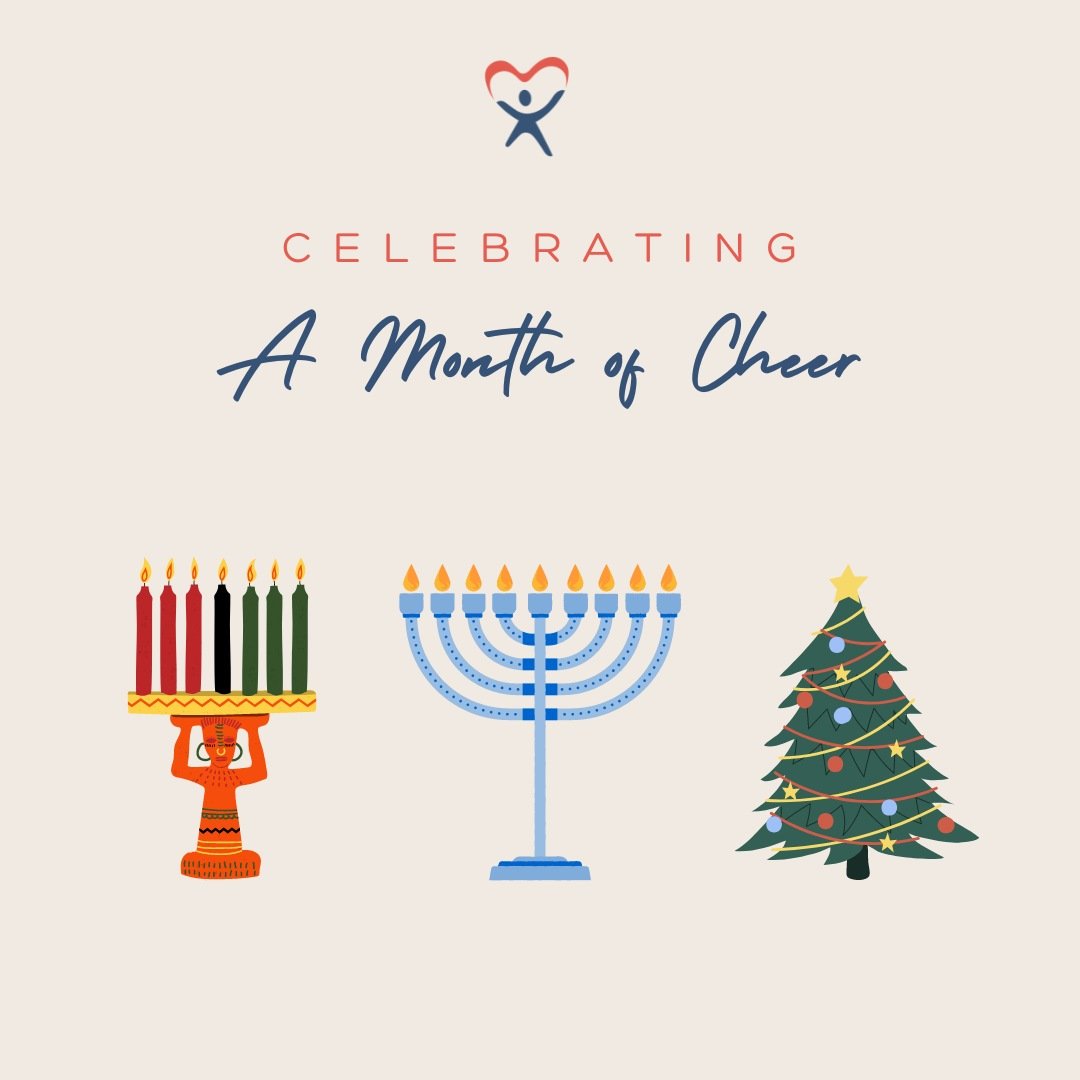As we approach a time of celebrations, let us explore the holidays being celebrated and why they are important to our CASA families.
Beginning the evening of December 10 and lasting eight days until December 18, Hanukkah or Chanukah celebrates the rededication of the Second Temple in Jerusalem, where Jews had risen up against their Greek-Syrian oppressors known as the Maccabean Revolt. Also known commonly as the “Festival of Lights,” Hanukkah begins on the 25th of Kislev on the Hebrew calendar with the lighting of the menorah-- the gold candelabrum whose seven branches represent knowledge and creation. The Hanukkah “Miracle” proclaims that once the Jews had successfully driven the Syrians out of Jerusalem, Judah Maccabee called on his followers to cleanse the Second Temple, rebuild its altar, and light the menorah. Although there was only enough oil for the menorah to remain lit for a single day, the flames continued to burn for eight nights. Jewish families keep the spirit of the miracle alive by lighting the menorah, eating traditional foods, and playing traditional games.
On December 25, Christians around the world gather to celebrate the holiday known as Christmas. This day marks the anniversary of Jesus of Nazareth’s birth. Nearly 2000 years ago, God sent the angel Gabriel to a young woman named Mary who was engaged to Joseph. The angel told Mary that she would become pregnant by the Holy Spirit and give birth to the Son of God to be named Jesus. When it came time for Jesus to be born, Mary and Joseph set out on a journey for Bethlehem where they could not find a place to stay so the only place they could find was a manger full of animals. Here the Son of God was born and Wise Men gifted the new King with gold, frankincense, and myrrh. Following the traditions first started by St. Nicholas, today, Christmas is celebrated with giving gifts, decorating Christmas trees, attending Church, sharing meals with family and friends, and waiting for Santa Claus to arrive. St. Nicholas would secretly travel to the countryside to bring gifts to the poor and sick to remind children of the greatest gift of all, Jesus Christ.
On December 26, the African-American cultural celebration of Kwanzaa begins and lasts until January 1 of the new year. Created in 1966 by Dr. Maulana Karenga, Kwanzaa celebrates the African-American culture following the Watts Rebellion known as the Watts Riots that broke out in August of 1965. The Watts Rebellion lasted for six days in the predominantly Black neighborhood of Watts in Los Angeles, California, which resulted in 34 deaths, 1,032 injuries, 4,000 arrests, involving 34,000 people and the destruction of 1,000 buildings. What began with a white police officer pulling over stepbrothers Marquette and Ronald Frye and arresting Marquette for a failed sobriety test, led to the outbreak of riots between the surrounding crowds and police forces. Kwanzaa remembers the brutality that took place against the African-American communities around the country during this time and honors African heritage with “first fruit” harvest celebrations. On each of the seven nights, families gather and a child lights one of the candles on the Kinara and one of the seven principles, Nguzo Saba, is discussed. Umoja, Kujichagulia, Ujima, Ujamaa, Nia, Kuumba, and Imani are the seven principles of African culture that contribute to building and reinforcing community among African-Americans. The African feast of Karamu is held on December 31. Families celebrate with songs and dances, African drums, storytelling, poetry readings, and large traditional meals.
We are wishing all of our CASA families very happy holidays this season!

